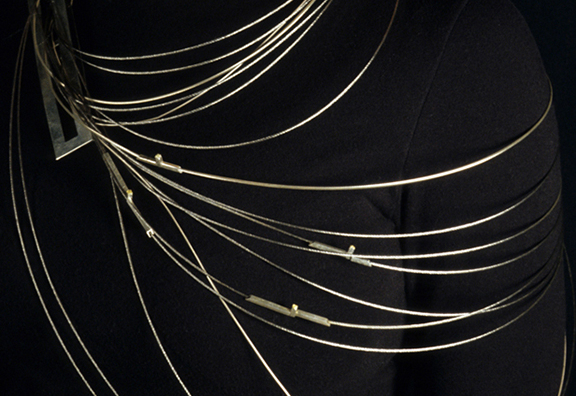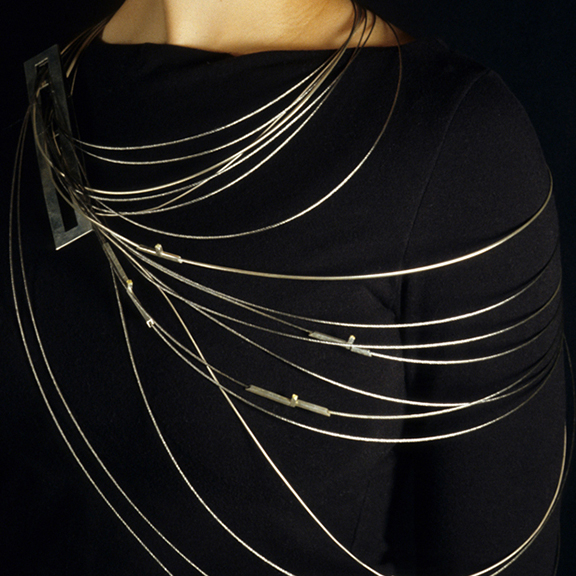For Seth Papac, “jewelry, in its concentrated and intimate scale, has the unique capability to retain history, hold a memory, convey a message, and transform a wearer.” This philosophy on the artistic merit of the studio jewelry movement pairs perfectly with the Museum’s extended exhibition, The Northwest Studio Art Jewelry Display. Seth Papac took some time to speak with Tacoma Art Museum and provide insights into their artistic process.
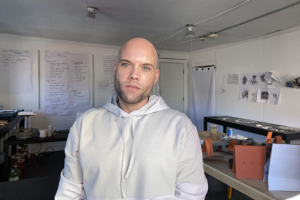
Who are some fellow jewelry artists or artists in general who have inspired you throughout your career?
I am extremely fortunate to have had some incredible educators and mentors throughout my career whose artistic and teaching practices continue to inspire me. I was lucky to study with Maria Phillips and Lori Talcott, Seattle-based jewelry artists and educators, during my undergraduate education at The University of Washington, and Iris Eichenberg, the Head of Metalsmithing at Cranbrook Academy of Art, where I attended graduate school. These artists, educators, and friends have profoundly impacted my professional and artistic trajectory.
How did you get into jewelry making as opposed to another creative outlet like painting or sculpture?
I entered college as a pre-architecture major, but quickly realized that I wanted to actually build things with my hands. The University of Washington had a Jewelry and Metalsmithing Department headed by the incomparable Mary Lee Hu. When I was introduced to her work and the field of jewelry and metalsmithing during a survey course at the UW, I knew immediately I should pursue the jewelry arts.
What message, if any, do you hope to convey through your work?
It varies depending on the body of work. In general, it is important for me to capitalize on the agency of jewelry to affect our presence and movement in and through life.
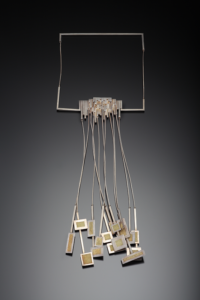
In what ways do you share your passion and engage with the community and fellow artists?
I view my artistic and teaching practices as a means to support, nurture, and challenge the various fields of jewelry and body-related objects. Outside of my studio and the classroom, I am an active member of the Society of North American Goldsmiths and serve on their Conference Programming Committee.
What does your creative process look like? How do you get started on a new piece? How do you know when it’s “finished?”
It varies depending on the body of work I am engaged with. Currently, my process engages 3D computer design and 3D printing, along with various traditional jewelry processes. I work on several pieces at one time, allowing them to develop over time and in conversation with each other. A piece is finished when I feel every aspect is essential, nothing is unnecessary.
In what ways do you try to challenge yourself when making new pieces?
I believe it is crucial to be consistently reflective, and this practice consistently generates challenges for me as an artist and educator.
What does generosity mean to you as an artist? How do you emulate this?
My experience of being mentored by several incredible people introduced the profound impact and importance of generosity. I work every day to pass this on to my students and through nurturing relationships with fellow artists, colleagues, and friends.
Is there a piece you think is most representative of who you are as an artist and the themes/stories you try to convey?
My work always reflects and mirrors my experience and life in that moment.
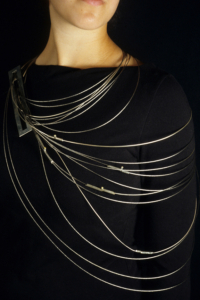
How much do you think about the person who might end up wearing your work when you’re creating something?
It is very important that jewelry, and the conceptualization and creation of jewelry, be in dialogue with the body. The intent of the work dictates whose/what type of body the work is meant to engage with.
Are there special challenges to working in jewelry that others might not expect?
Designing work that must function on and with the body is extremely challenging. It is one of the reasons I am a jewelry artist.
Is there a work in TAM’s collection that you have a strong connection to and why (jewelry or otherwise)?
I have a very strong connection to any work made by Maria Phillips. She literally takes trash and makes it incredibly engaging.
What would you like to see TAM do with the jewelry collection in the future? In what ways can TAM highlight the influence of the jewelry-making movement on art in the Pacific Northwest as a whole?
The Pacific Northwest was one of the main breeding grounds for figurative, narrative jewelry, which American Art Jewelry has been largely defined by. I think it is incredibly important to record and share this history, as well as support and share the work of artists who originated from and continue to evolve from this tradition.
Explore Seth Papac’s work as part of the Northwest Studio Art Jewelry Display, now on extended view at Tacoma Art Museum. Find more of Papac’s work on eMuseum and on his website.
